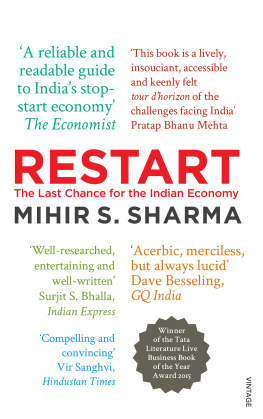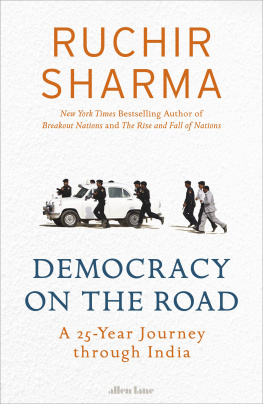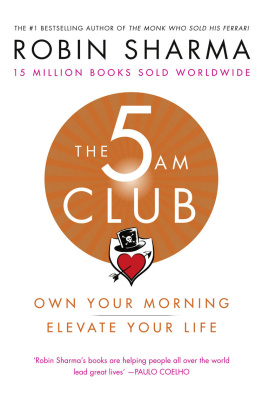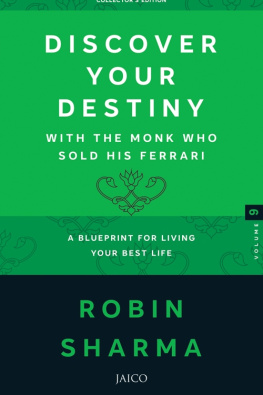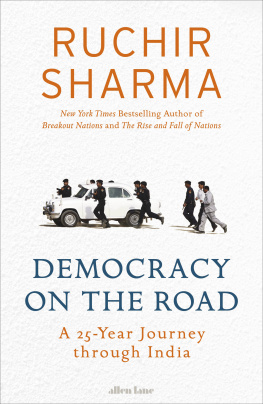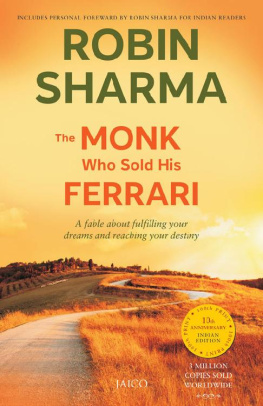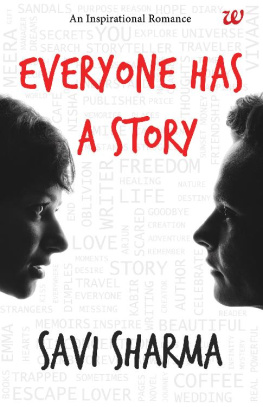Read this book. I strongly suspect there will be parts in it that you find upsetting or even infuriating. But you wont put it downAbhijeet Banerjee
Introduction
WHAT IS THE MATTER WITH INDIA?
W hen the first plane crashed into the World Trade Center that beautiful September morning, the West changed: it began to look outwards. In the weeks and months after 9/11, the exuberance of the self-obsessed Clinton era became a dim, distant memory. But financial markets feed on exuberance, and on optimism. And so, even as some eyes in the West turned fearfully to the dangerous parts of the outside world, others eyes turned to seek out those places that offered hope.
One such pair of eyesbluer and keener than mostbelonged to Jim ONeill, who headed the global economic research division at Goldman Sachs. The vast investment bank was, as usual, quicker to respond to a world in which everything had changed. As the smoke rose from the burning World Trade Center, a trader at Goldmans buildinga few blocks downwindlooked up at the papers fluttering through the dusty blue sky, and remarked on all the written derivatives contracts that had literally flown out the window. ONeill, true to form, saw at once that the energies of the West would turn from the engines of economics to the engines of war. And yet, he pointed out in a report that was to change the world, there was hope for the world economy elsewhere: In 2001 and 2002, real GDP growth in large emerging economies would exceed that of the West.
The large emerging economies ONeill had in mind were four: Brazil; Russia; India; and, obviously, China. Together, in that 2001 report, he called them BRICor, showing the nifty salesmanship that is a large proportion of the skill set of modern finance, the BRICs that would build the global economy. Over the next decade, the four emerging economies would come to dominate global growth.
Twelve years later, ONeill was a disappointed man. Not in China, of course, which had, in the first decade of the new millennium, come to dominate global manufacturing and trade. Not even that much in Brazil, which grew slower than expected, then faster than expected, then slower than expected againa sequence clearly Brazils fault, rather than of those who kept on expecting the wrong thing.
No, ONeills biggest problem was India. It was Indias apparent failure to match expectations that had caused the whole BRIC idea to be sniggered at on Wall Street; with the financial worlds customary sparkling wit, BRIC was now being expanded as Bloody Ridiculous Investment Concept.
ONeill, stung, said in the middle of 2013 that India was the biggest disappointment of the BRIC countries. His frustration had been growing steadily over the decade-and-some since he had invented the concept. The previous year, when an electricity failure across northern India plunged hundreds of millions of people into darkness in the largest power cut in history, ONeill wrote in a note to Goldmans investors that it highlighted the scale of the challenges. He ended his note somewhat unusually, by demanding of India: What is the matter with you guys?
What was the matter with India?
Superficially, going just by the numbers, we guys hadnt had that bad a decade. Since 2001, the economy had grown manifold. Hundreds of millions of people had been lifted out of abject poverty in a few years, in an achievement unmatched in human historywell, except by China, a couple of decades earlier. Almost every single Indian lived in a better house, ate better food, and had a far higher standard of living than at the beginning of the millennium.
And India had managed solid, sustained real growth in output for many yearsnot the double-digit miracle that China kept on delivering, but close. Seven per cent growth in gross domestic product adjusted for price inflationreal GDP growthwas seen as startlingly fast in 1997. By around 200506, that much was being seen as Indias birthright. So fast was the economy expanding, in fact, that the amount added to the average Indians income in the first fourteen years of the twenty-first century was as much as had been added in the entire last half of the twentieth.
Not even the financial crisis of 2008 appeared to have slowed India down that much. Even as America and Europe teetered on the edge of another Great Depression, Indians warmly congratulated each other on their foresight in keeping their financial world detached from that of the West. Decoupling was the in-word that year, a gentle way of saying that emerging economies had happily broken up with the West because the relationship just wasnt working for them any more. Supercharged by the cash being pumped into the arteries of global finance by the worlds governments, Indias economy finally seemed to be touching double-digit growth at the very moment the industrialized nations seemed to be poised for disaster.
But, then, it all fell apart.
Indias economic miracle had been held together by rubber bands and hope, the equivalent of the elderly buses that ply its potholed village roads. It turned out that the early years of this century had all been downhill; the broken-down bus that was the Indian economy had been coasting along, not purring powerfully. Sometime in 2012, it hit the bottom of the slope. And then, when the government pressed the accelerator, the ancient engine stalled.
Month after month, the worlds investors looked hopefully at the numbers from New Delhis statisticians. And, month after month, the numbers were the same, dashing all hopes: manufacturing output was flat. Nobody so much as thought of investing; no company dared to increase production. Indias factories had fallen silent, its mines were deserted, its trucks stood parked beside empty highways. Quarter after quarter, GDP growth decreased, and the government seemed powerless to reverse the decline. A noisy, frustrated desperation began to pervade all thinking about Indias economic future, both within the country and on trading floors and in boardrooms across the world.
The guys in power then had been, once, feted. They had been called, once, a dream team of economic managers. But their reputations were unequal to the task. They kept their foot on the pedal, but the bus still refused to move. Meanwhile, a crisis seemed to be approaching in the rear-view mirror. India needed dollars to buy petroleum; almost all its fuel has to come from abroad. But Indians simply werent making enough stuff that they could sell in return for the dollars they needed. And, so, any minute, unless the rest of the world was kind enough to lend us a few billion dollars, India might be stuck without cash to pay its fuel bills.
This was exactly what had happened in 1991, a crisis that became the trigger for India first opening up to the worldand the excuse that Manmohan Singh used to start dismantling socialism as finance minister. Two decades later, Dr Singh was prime ministerand, at the end of his long career in public life, it seemed to be happening again.

